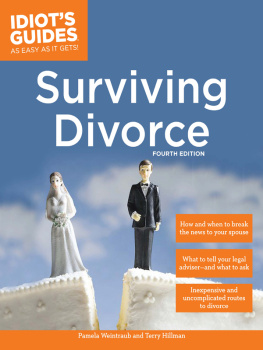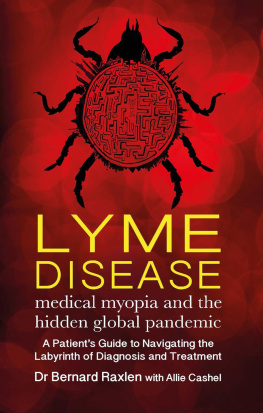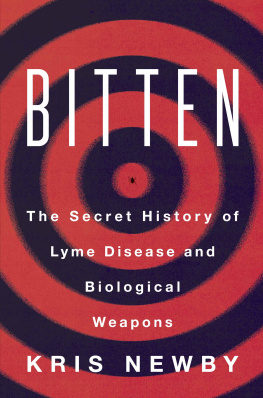Pamela Weintraub - Cure Unknown: Inside the Lyme Epidemic
Here you can read online Pamela Weintraub - Cure Unknown: Inside the Lyme Epidemic full text of the book (entire story) in english for free. Download pdf and epub, get meaning, cover and reviews about this ebook. year: 2013, publisher: St. Martins Press, genre: Science. Description of the work, (preface) as well as reviews are available. Best literature library LitArk.com created for fans of good reading and offers a wide selection of genres:
Romance novel
Science fiction
Adventure
Detective
Science
History
Home and family
Prose
Art
Politics
Computer
Non-fiction
Religion
Business
Children
Humor
Choose a favorite category and find really read worthwhile books. Enjoy immersion in the world of imagination, feel the emotions of the characters or learn something new for yourself, make an fascinating discovery.

- Book:Cure Unknown: Inside the Lyme Epidemic
- Author:
- Publisher:St. Martins Press
- Genre:
- Year:2013
- Rating:4 / 5
- Favourites:Add to favourites
- Your mark:
Cure Unknown: Inside the Lyme Epidemic: summary, description and annotation
We offer to read an annotation, description, summary or preface (depends on what the author of the book "Cure Unknown: Inside the Lyme Epidemic" wrote himself). If you haven't found the necessary information about the book — write in the comments, we will try to find it.
The groundbreaking, award-winning investigation into Lyme diseasethe science, history, medical politics, and patient experiencenow with a brand new chapter.
Pamela Weintraub paints a nuanced picture of the intense controversy and crippling uncertainty surrounding Lyme disease and sheds light on one of the angriest medical disputes raging today. She also reveals her personal odyssey through the land of Lyme after she, her husband and their two sons became seriously ill with the disease beginning in the 1990s.
From the microbe causing the infection and the definition of the disease, to the length and type of treatment and the kind of practitioner needed, Lyme is a hotbed of contention. With a CDC-estimated 200,000-plus new cases of Lyme disease a year, it has surpassed both AIDS and TB as the fastest-spreading infectious disease in the U.S. Yet alarmingly, in many cases, because the disease often eludes blood tests and not all patients exhibit the classic bulls-eye rash and swollen joints, doctors are woefully unable or unwilling to diagnose Lyme. When that happens, once-treatable infections become chronic, inexorably disseminating to cause disabling conditions that may never be cured.
Weintraub reveals why the Lyme epidemic has been allowed to explode, why patients are dismissed, and what can be done to raise awareness in the medical community and find a cure. The most comprehensive book ever written about the past, present and future of Lyme disease, this exposes the ticking clock of a raging epidemic.
432 pagesPublished June 10th 2008 by St. Martins Press
Review
Millions suffering from symptoms of a mysterious disease need suffer confusion and loss no longer. If you want to know the real story behind Lyme disease and how to find your way back to health, read this book. Mark Hyman, MD, New York Times bestselling author of The Blood Sugar Solution
In the war of information on Lyme disease, patient activist groups have started from a marked disadvantage to the medical establishment in terms of visibility and credibility. That may be changing, and... Cure Unknown could be one reason. Washington Post
In Cure, Unknown, Pamela Weintraub has produced both the definitive book about Lyme disease and associated disorders and a survivors account of a grueling medical odyssey. Weintraub is a masterful science writer and storyteller, and she tackles the quarrels and quagmires surrounding this baffling illness with intelligence and pathos. Kaja Perina, editor in chief of Psychology Today
A thoroughly researched and well-written account of the diseases controversial history. Jane Brody, New York Times
I sometimes wonder if the only investigative writers who will possess the necessary temerity to remove the white gloves and tackle these putative experts to the ground will be those, like Weintraub...whose personal experience demands that they follow the rocky trail that leads to the truth. Hillary Johnson, author of Oslers Web: Inside the Labyrinth of the Chronic Fatigue Syndrome Epidemic
Pam Weintraub, veteran science writer, weaves personal narrative with hard-hitting investigative journalism to bring the underground epidemic of Lyme and other tick-borne diseases up from under the radar. Rebecca Wells, author of Ya-Yas in Bloom and Divine Secrets of the Ya-Ya Sisterhood
Pam Weintraub, veteran science writer, weaves personal narrative with hard-hitting investigative journalism to bring the underground epidemic of Lyme and other tick-borne diseases up from under the radar. Rebecca Wells, author of Ya-Yas in Bloom and Divine Secrets of the Ya-Ya Sisterhood
Pamela Weintraubs book is compelling, clear and troubling. Patti Adcroft, editorial director of Discover magazine
Science journalism at its best. Ami Katz, M.D.
About the AuthorPAMELA WEINTRAUB is the executive editor of Discover magazine. She has covered science and biomedicine for national media for more than twenty-five years. She lives in Brooklyn, NY.
Pamela Weintraub: author's other books
Who wrote Cure Unknown: Inside the Lyme Epidemic? Find out the surname, the name of the author of the book and a list of all author's works by series.






